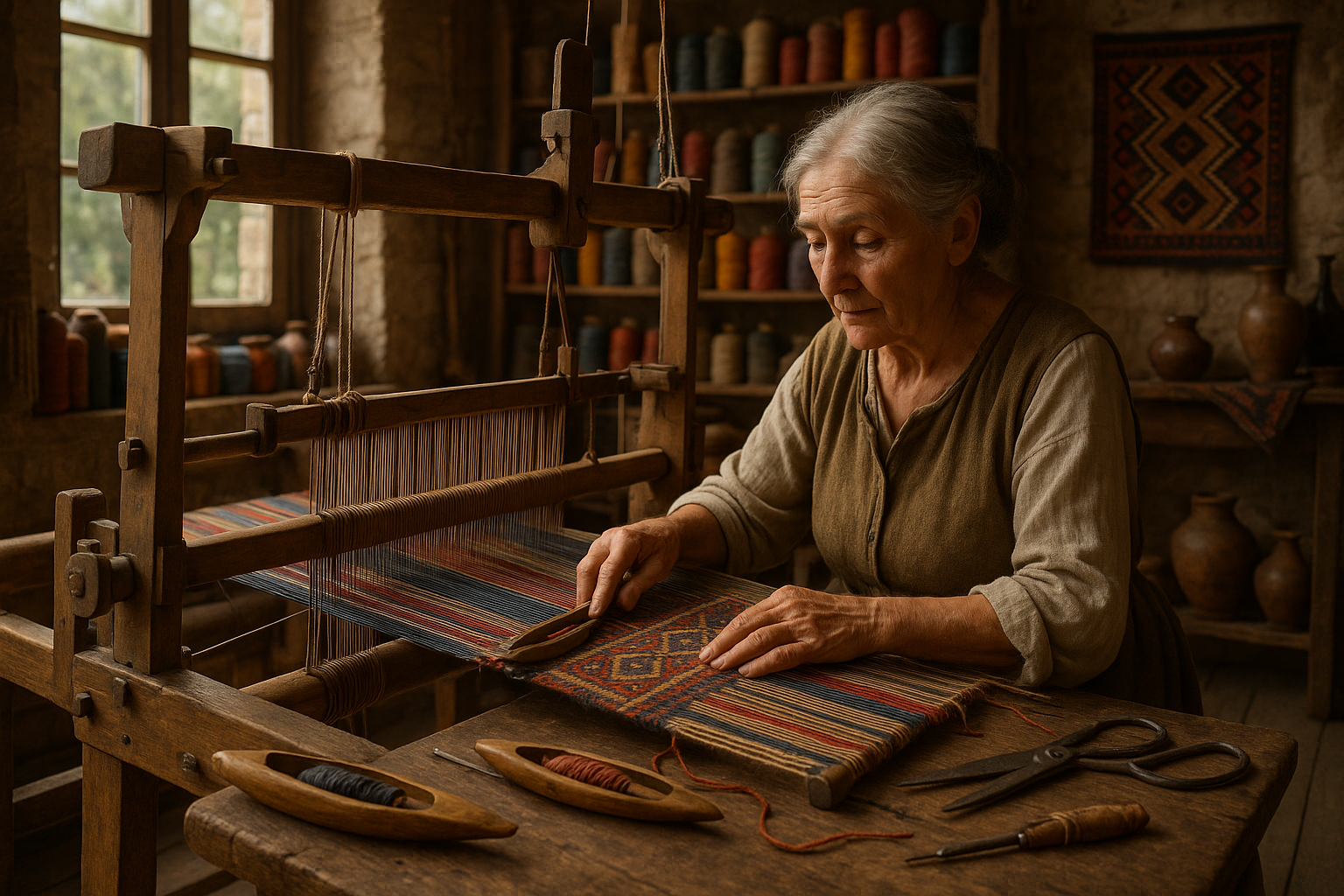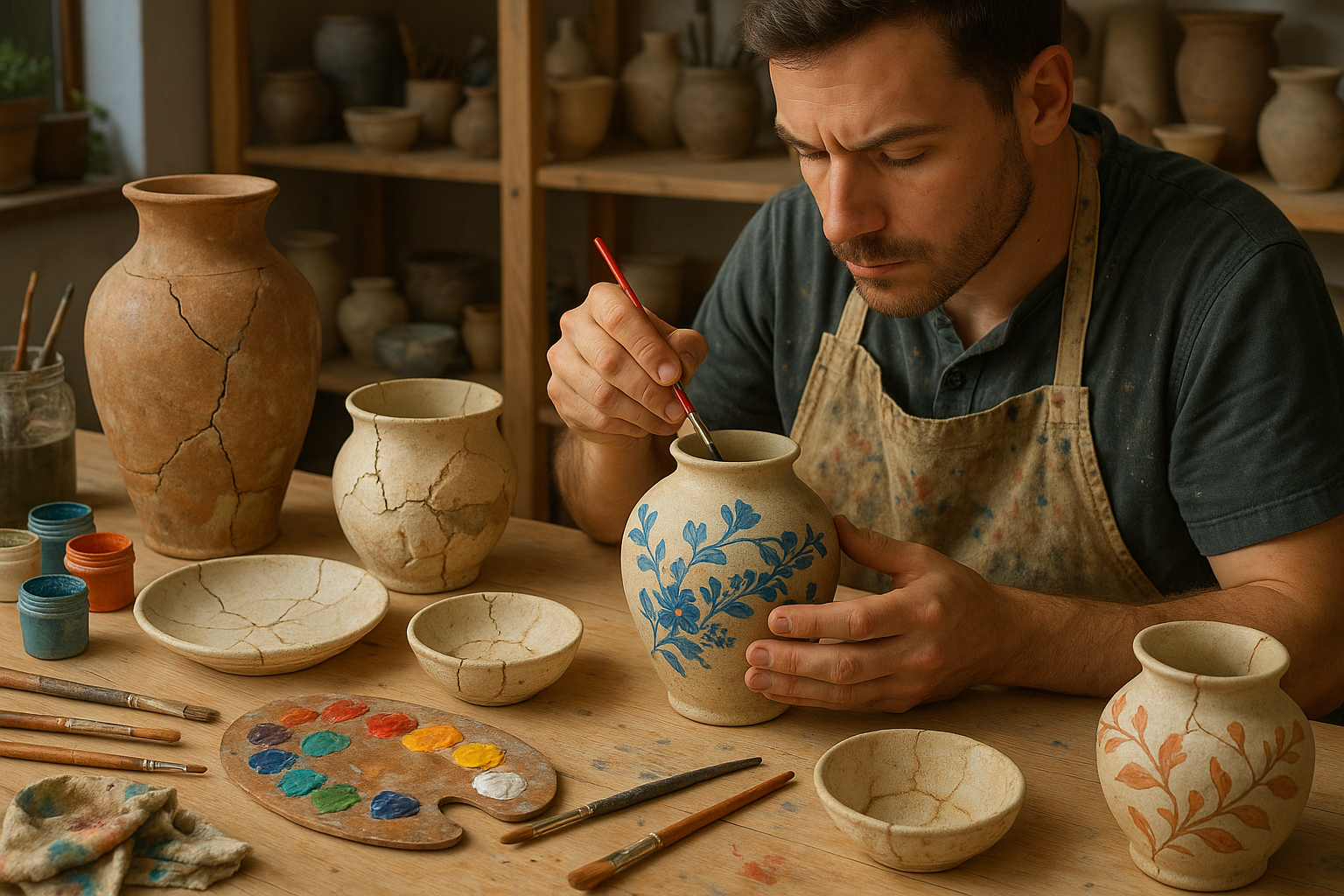In a world where rapid technological advancement often overshadows the treasures of the past, there exists a captivating intersection where tradition meets conservation. This intersection is embodied in the timeless art of traditional loom knowledge—a craft that has woven its way through centuries, carrying with it stories, techniques, and cultural heritage that are as intricate as the patterns it produces. 🌍✨
The art of traditional loom weaving is not merely a method of textile production; it is a tapestry of human history, creativity, and resilience. From the rhythmic clatter of wooden looms to the vibrant threads meticulously chosen and interlaced, this craft tells the story of civilizations, of peoples who have found identity and expression through the creation of textiles. But today, this heritage faces challenges that threaten its very existence, making its conservation more crucial than ever.
Why does this ancient craft matter in our modern world? The answer lies not only in the aesthetic value of the textiles produced but also in the rich cultural narratives they embody. Every piece of fabric is a testament to the ingenuity and artistic vision of its weaver, a living document of cultural practices passed down through generations. As we delve into the conservation of traditional loom knowledge, we are not just preserving textiles—we are safeguarding identities, communities, and the intangible heritage of humanity itself.
This article will take you on a journey through the vibrant world of loom weaving, exploring its historical significance, the unique techniques involved, and the cultural implications of its conservation. We will unravel the threads of this age-old craft to discover how it has stood the test of time and why its preservation is a testament to the resilience of cultural heritage in the face of modernization.
The Historical Tapestry of Loom Weaving
To understand the importance of conserving traditional loom knowledge, we must first step back in time. Loom weaving dates back thousands of years, with archaeological evidence suggesting that it was practiced as far back as the Neolithic period. The significance of this craft can be observed in ancient civilizations across the globe—from the intricate tapestries of the Incas and the vibrant textiles of West Africa to the silk creations of China and the woolen wonders of Europe.
These textiles were not just functional; they were imbued with meaning. They served as currency, symbols of status, and tools of communication. The patterns and colors used in these weavings were often indicative of a community’s beliefs, values, and social structure. Through the preservation of traditional loom techniques, we are able to keep alive the rich tapestries of history that these textiles represent.
The Art and Science of Loom Weaving
At its core, traditional loom weaving is a marriage of art and science. The weaver’s hands move with precision and purpose, guiding threads with dexterity and creativity. This process is a dance between the mind’s eye and the loom, resulting in a tangible piece of art that speaks volumes without words. The techniques involved are as varied as the cultures that practice them, each with its own set of skills, patterns, and materials.
In this section, we will delve into the different techniques of loom weaving that have been preserved through generations. From the basic over-under motion of plain weave to the complex interplay of warp and weft in tapestry weaving, these methods are not only techniques but traditions that connect us to our ancestors. Moreover, we’ll explore how these techniques have been adapted and modified over time, highlighting the dynamic nature of this enduring craft.
Cultural Heritage and Community Resilience
Traditional loom weaving is more than an art form; it is a cornerstone of cultural identity and community resilience. For many indigenous communities, the loom is a tool of empowerment, allowing them to tell their stories and sustain their way of life. The act of weaving is often communal, with knowledge passed down from elder to youth, ensuring the continuity of cultural practices.
Conservation efforts not only preserve the techniques but also empower communities by providing economic opportunities and fostering cultural pride. In an era where globalization threatens to homogenize cultural expressions, the preservation of traditional loom knowledge is a powerful act of resistance and resilience. 🌟
As we journey further into this article, we will explore how conservation initiatives are making a difference. From grassroots movements to global organizations, we will examine how different stakeholders are collaborating to ensure that the art of traditional loom weaving continues to thrive for future generations.
Join us as we unravel the intricacies of loom weaving, celebrating the artisans who keep this timeless craft alive, and exploring the innovative ways in which it is being preserved and adapted in our ever-changing world. Through the preservation of traditional loom knowledge, we honor the past, enrich the present, and inspire the future. 🧵

Conclusion: Embracing the Threads of Time
In exploring the theme of Preserving Heritage: The Timeless Art of Traditional Loom Knowledge in Conservation, we delved into the intricate world of textile traditions that span across cultures and centuries. This rich tapestry of knowledge is not merely about the fabric itself but encompasses the stories, skills, and cultural identities that are woven into each thread.
Throughout the article, we examined the historical significance of loom weaving, highlighting its role as a crucial element in the cultural heritage of numerous societies. From the vibrant patterns of South American textiles to the intricate designs of Asian fabrics, loom weaving serves as a testament to human creativity and adaptability. These traditional techniques have been passed down through generations, often through oral tradition, and remain a living connection to our past.
The discussion also covered the challenges faced in preserving these invaluable traditions. The modernization of textile production, the loss of traditional skills, and the global homogenization of culture pose significant threats to the continuity of loom knowledge. These challenges are exacerbated by the economic pressures faced by artisans, making it difficult for them to sustain their craft.
However, as we have seen, there is a growing movement towards conservation and revitalization of these traditional arts. Initiatives by non-profit organizations, cultural institutions, and individual artisans are making a significant impact. By promoting sustainable practices, offering educational programs, and providing platforms for artisans to showcase their work, these efforts are ensuring that traditional loom knowledge remains vibrant and relevant.
The importance of preserving traditional loom knowledge extends beyond the preservation of culture—it is also about fostering sustainability and innovation. The techniques developed over centuries offer sustainable alternatives to modern production methods, promoting environmental stewardship. Moreover, the fusion of traditional and contemporary designs is opening new avenues for innovation, inspiring designers and creators worldwide.
In conclusion, the timeless art of traditional loom weaving is a treasure trove of cultural, historical, and environmental significance. Its preservation is not just a nod to the past but a step towards a more sustainable and culturally rich future. We encourage you to share your thoughts on this topic in the comments below or share this article with those who might be interested in the intricate beauty of traditional loom weaving. 🌍
By applying what you have learned, whether through supporting artisan communities, advocating for cultural preservation, or simply spreading awareness, you are contributing to a global effort to cherish and protect our shared heritage. Together, let’s keep these traditions alive and thriving! 💪
For further reading and resources, please explore the following active links:
- Cultural Heritage Preservation Society
- Sustainable Textiles Initiative
- Loom Weaving History and Techniques
Thank you for taking the time to explore this vital topic with us. Your engagement is crucial in weaving the threads of the past with the present, ensuring a vibrant and sustainable future for traditional loom knowledge.
Ensure that the links provided are checked for their current status and relevance before publication.




